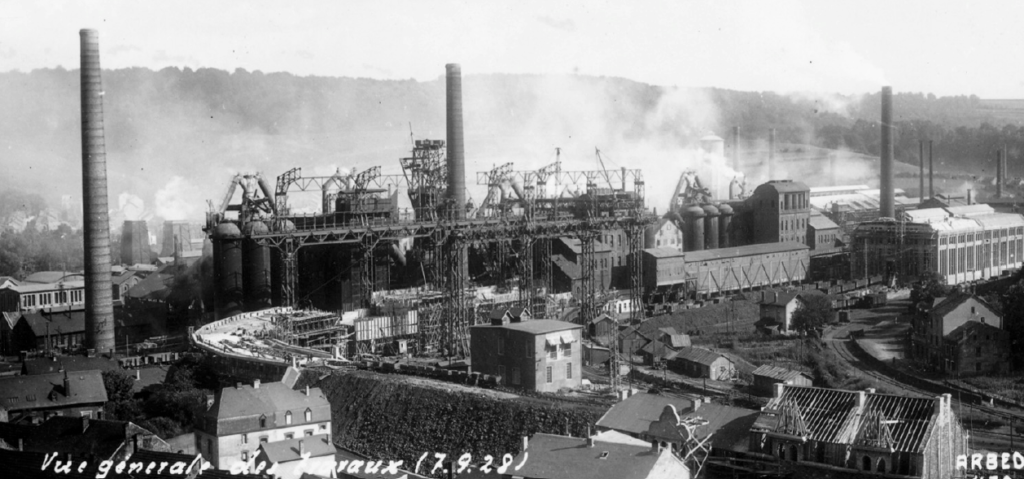Many brownfield development projects are under way in the Grand Duchy of Luxembourg. ‘Porte de Hollerich’ in Luxembourg City, ‘Belval’ in Esch-sur-Alzette, ‘Wunne mat der Wooltz’ in Wiltz and ‘NeiSchmelz’ in Dudelange are a few examples. All these are creating new urban districts with living space for many additional inhabitants and businesses. The ‘NeiSchmelz’ project in Dudelange will provide an additional 1,000 housing units on a 40 hectare brownfield site.
Large-scale brownfield development projects present many challenges for their cities, especially energy. In addition, existing infrastructure struggles to satisfy the increased demand. For ‘NeiSchmelz’, an innovative energy concept was developed, to use photovoltaics and deep geothermal energy.

Rationale for action
Because of its size, the ‘NeiSchmelz’ brownfield development poses significant challenges for the existing energy network. This would need to be extended if not complemented with new production facilities. As infrastructure investment significantly increases the cost of such projects, an alternative solution was needed.
‘NeiSchmelz’ was therefore planned as an eco-district. Renewable and carbon-neutral energy will be produced on site, i.e. not relying on fossil resources to supply electricity or heat. There are no centralised renewable energy production facilities in the area, so future energy in the district must be produced on site.
Planners had to develop an energy concept that relies on different energy sources. These will be photovoltaic installations (roofs and open ground) as well as the first deep geothermal drilling in Luxembourg. However, being the first in Luxembourg to drill 2,000 meter down, experience is scarce and the viability and potential had to be determined first.
Objective
Deep geothermal drillings are costly and innovative measures require intensive scoping-studies and test drilling to investigate whether this energy source is financially viable.
The potential for geothermal energy around ‘NeiSchmelz’ is significant. This has led to further investigation to assess drilling for heating in the district.
A first study on geothermal potential in Luxembourg was a doctoral thesis at the German Research Centre for Geosciences and the Luxembourg Geological Service between 2010 and 2015. A more concrete feasibility study included several drillings to test technical details and feasibility.
Time frame
The first energy concept for the district was developed in 2014. In 2015 important geothermal energy potential in ‘NeiSchmelz’ was identified. A new energy concept was developed in 2017 building on geothermal energy as a primary source for heat. A feasibility study between 2017 and 2019 determined the potential in greater detail.
Key players
The driving force behind the district and the energy concept is the City of Dudelange. It approves the energy concept and the land-use plan as well as following up on implementation of the measures. The district is being developed in cooperation with the Luxembourg Ministry of Housing and the national fund for affordable housing ‘Fonds du Logement’. The Luxembourg Ministry of Environment and its energy department is also a key player for developing and realising the districts’ energy concept. The City of Dudelange can thus rely on the support of national institutions in developing and implementing the plans.
Implementation steps and processes
With little experience of deep geothermal drillings among the involved institutions, preliminary investigations were required. A feasibility study measured the geothermal energy potential including test drillings of 300 to 400 meters between 2017 and 2019 in the area of the future district. The feasibility study determined that deep geothermal energy could supply the entire district with heat. At 2,000 meters temperatures of 70° to 80° Celsius yield enough heat to supply the district with hot water.
Required resources
The preparatory analysis including the feasibility study and test drillings cost about half a million Euros. This was co-funded by 40 % from the Luxembourg European Regional Development Fund (ERDF) programme. The total resources planned for deep geothermal drilling is unknown.
Results
‘NeiSchmelz’ will be equipped with a district heat system powered by a centralised geothermal energy plant. In conjunction with photovoltaic installations and near-surface geothermal energy, ‘NeiSchmelz’ will be an energy self-sufficient development.
Experiences, success factors, risks
Geothermal energy is new to Luxembourg and knowledge of potential, techniques, feasibility and economic viability are still scarce. In developing the concept and the feasibility study, cooperation between specialised players is key to ensuring that knowledge is institutionalised. This will help when implementing similar projects in future.

Conclusions
Geothermal energy means the heat for all ‘NeiSchmelz’ will be from a renewable energy source. In conjunction with extensive photovoltaic installations, the district will have energy self-sufficiency and be a zero-carbon emissions district. As such, it is the first in Luxembourg, offering important experience for future large-scale brownfield developments in the country.
Contact
Mr Patrick Hoss, Director of the ecological department of the City of Dudelange: patrick.hoss@dudelange.lu
References
Tageblatt, 2018: Newspaper article on the planned use of geothermal energy in Dudelange (in German): https://www.tageblatt.lu/headlines/das-heisse-potenzial-von-duedelingen/
City of Dudelange, 2019: Chronology of the development of the brownfield development ‘NeiSchmelz’ (in French): https://www.dudelange.lu/fr/projets-urbains/projet-neischmelz





